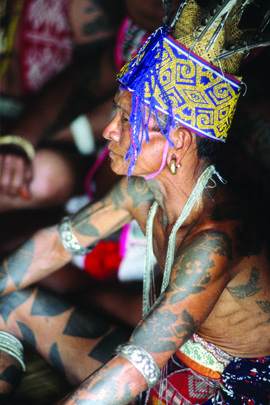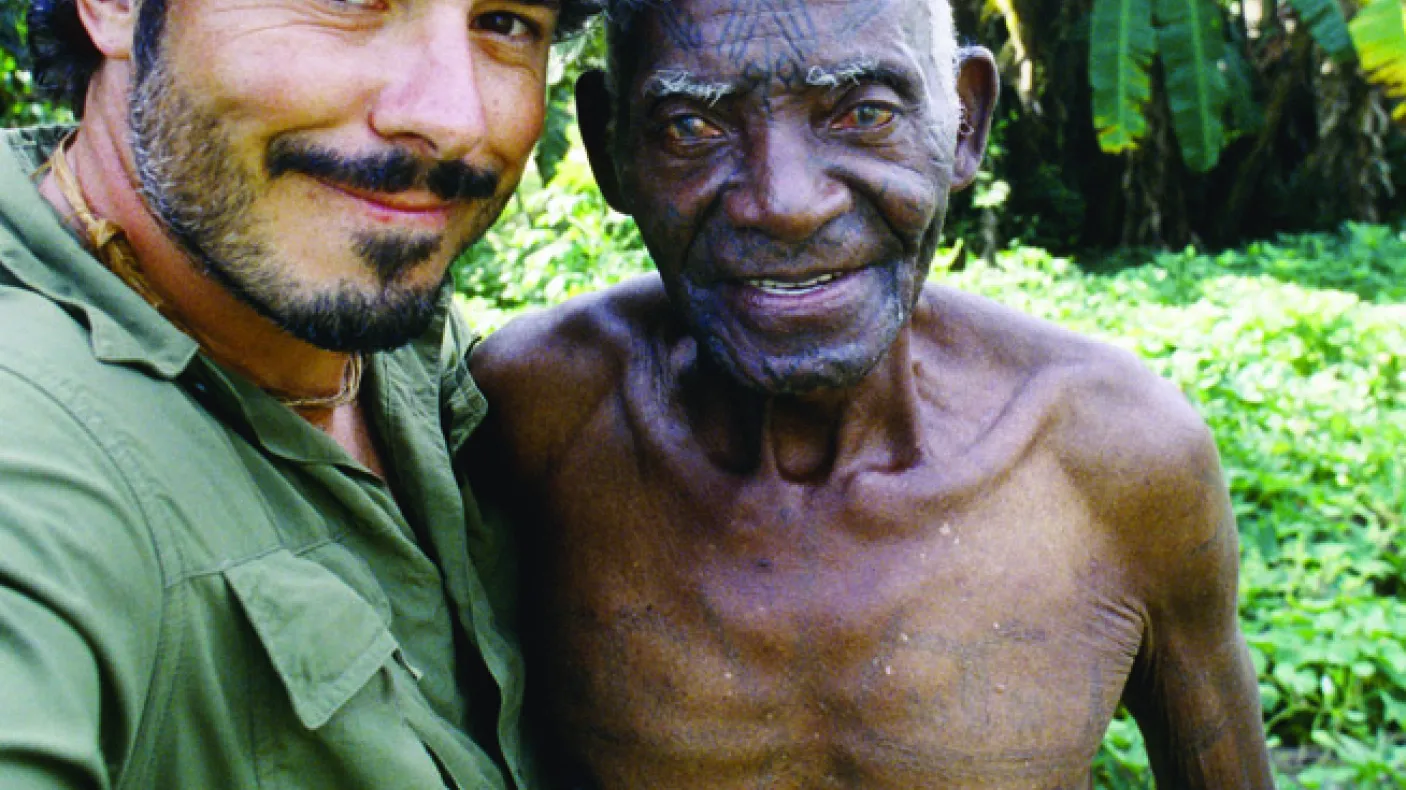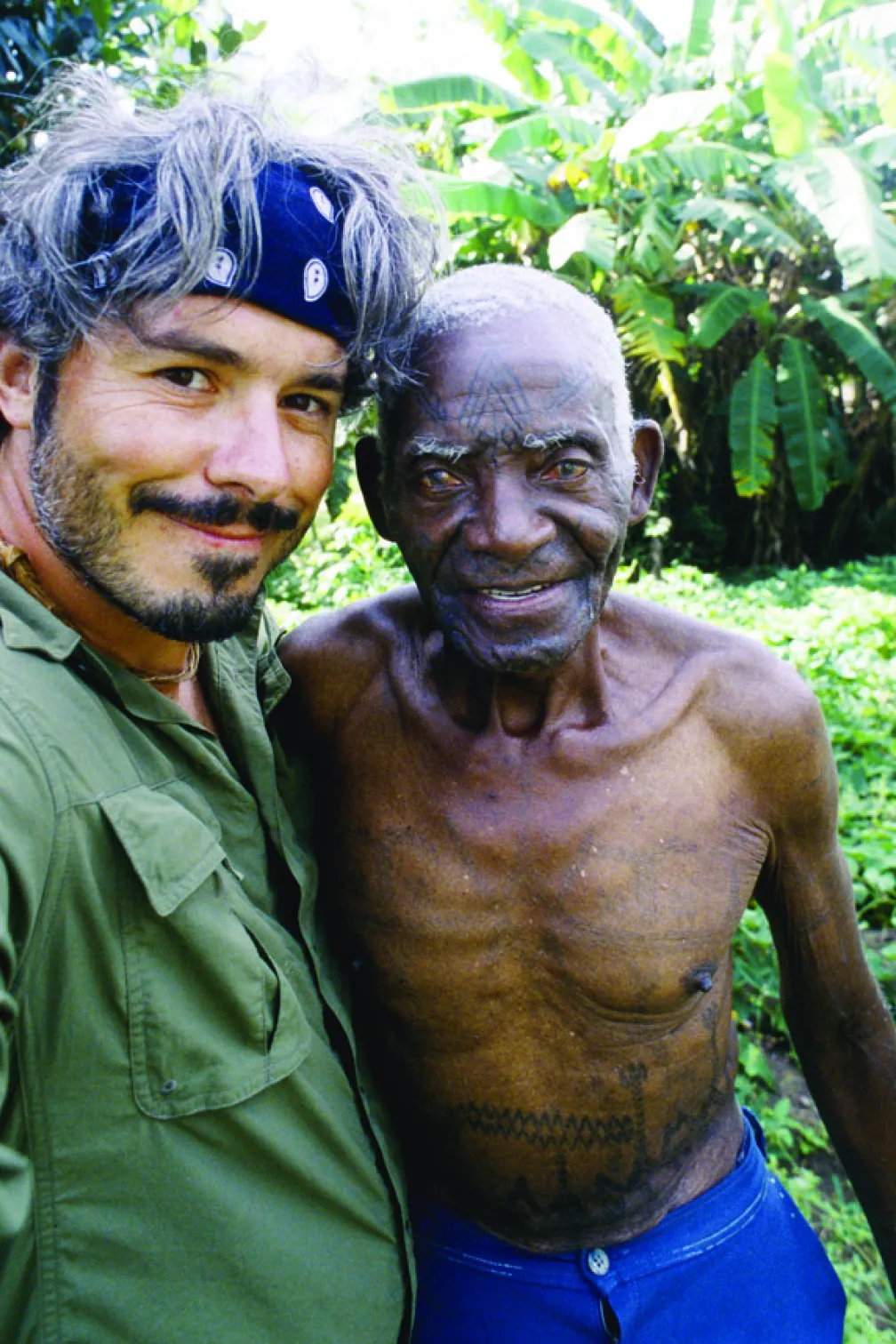The Tattoo Hunter
Published
Categories
Author
Blog Post
Guest blog by Doug Wallace
Anthropologist Lars Krutak has documented the tattoo traditions of Indigenous people all over the world, from the Amazon to the high Arctic.
A noted tattoo specialist, Washington, D.C.-based Lars Krutak is a featured speaker at an upcoming instalment of ROM Speaks on June 14, in connection with the exhibition Tattoos: Ritual. Identity. Obsession. Art. Currently at the ROM until September 5, the exhibition explores the 5,000-year-old multi-faceted world of tattooing and features a selection of Krutak’s photographs from the field.
My experience centres on working with indigenous cultures, trying to preserve what’s left of the tattooing culture, trying to make people aware of it before it vanishes. Tattooing has been a pan-human phenomenon for millennia. It’s one of the oldest forms of human expression and is part of our world’s heritage.
Originally from Colorado, I’m a Research Associate at the National Museum of Natural History, which is part of the Smithsonian Institution in Washington, D.C. I was also a graduate student at the University of Alaska Fairbanks.
Within a couple weeks of my arrival in Fairbanks, an Athabaskan woman with chin tattoos walked by me. I was intrigued because I didn’t know there was a tattoo tradition in the North. So I did a little investigating and found out that just about every indigenous culture across the Arctic, from the Bering Strait to Greenland, has a tattoo tradition. I learned about a group of 10 or so women in their 80s and 90s on St. Lawrence Island in Alaska who had traditional skin-stitched tattoos. I did as much research as possible to educate myself on the traditon and to know what questions to ask, then wrote letters seeking permission to work in the community.
Once there, I realized that no one was recording the story of these women for future generations, and that this unique cultural heritage would soon vanish before we had an adequate window to document it. So their story became the subject of my master’s thesis: the tattooing traditions of the St. Lawrence Island Yupik people.
Rites of Passage
Alaska and Canada have incredible, extremely diverse indigenous tattoo traditions, which I look at as a visual language. You can tell a lot about someone by reading these visual cues, symbols that help decipher aspects of their histories—their religion, their family designs, their clan patterns—there’s a visual vocabulary open to you, if you know how to read it.
Tattoos today have become recognized as an art form, but in the indigenous world, they were far from that. Occasionally, there were some tattoos that accentuated facial features, but they had to be earned; you had to perform a series of rituals or accomplishments to prove you had become an adult in the eyes of the community. Tattoos demarcated life events—the birth of a child, the death of a parent—rites of passage that ushered you from one mode of existence to the next. A tattoo permanently solidified the transformation.
Marked for Posterity

With all the travelling that went with my research, I eventually came to have all of the traditional tattooing techniques on my body: handpoked, hand-tapped, skinstitched, skin-cut—a form of scarification—and, of course, machine tattoos.
In terms of today’s fascination with tattoos, while there once was a criminal and subversive stigma associated with them, those connotations don’t hold true anymore. When people in the mainstream media—movie stars, sports stars, those in the public eye—made them more widespread, tattoos became more accepted. It’s fairly inexpensive to go and get one these days, too; there’s a tattoo artist on almost every street corner. Back in the day, you had to hunt them down because they were on the fringes of society.
But, new or old, tattoos are part of humanity’s heritage, and the original ones are vanishing in many places around the world. Within the next decade, for many different reasons, the last generation of traditional tattoo bearers will be gone forever.
Originally published in the Summer 2016 issue of the ROM Magazine.


